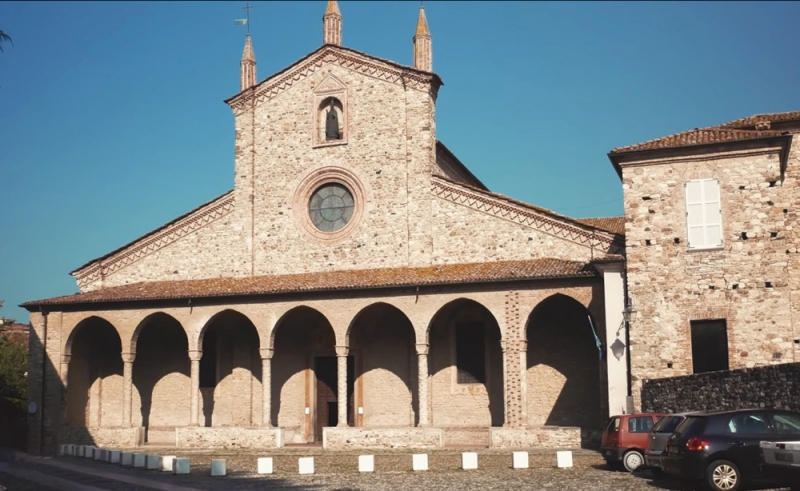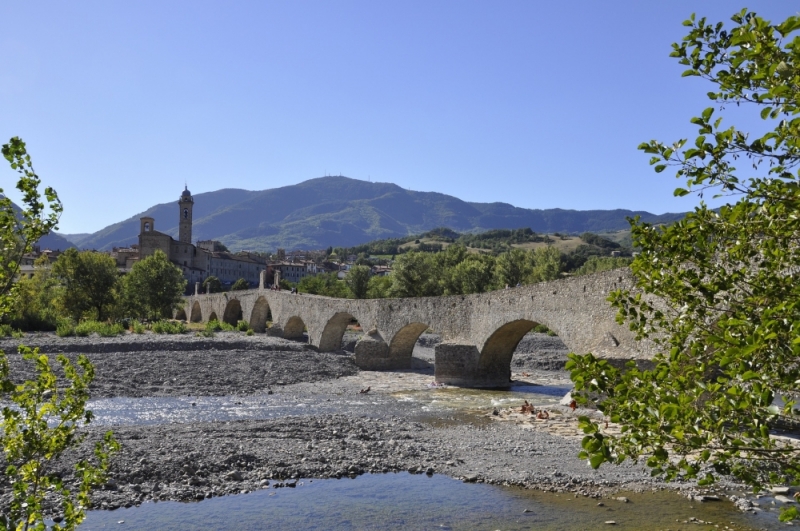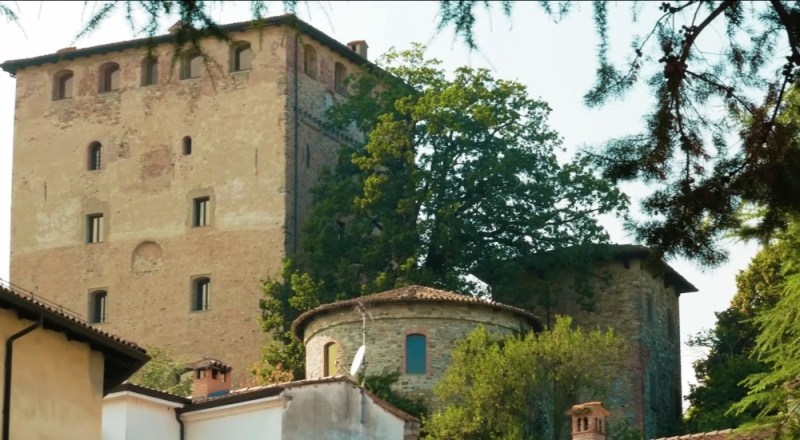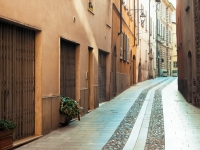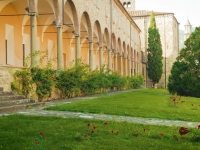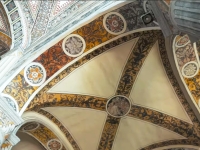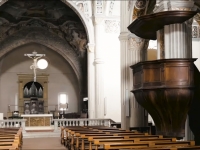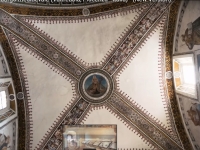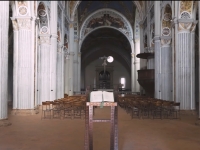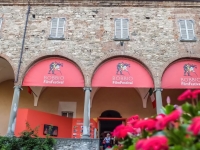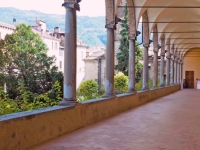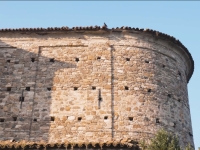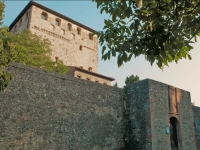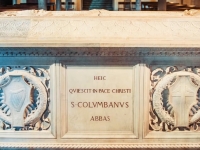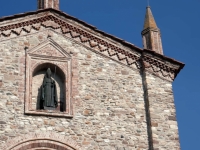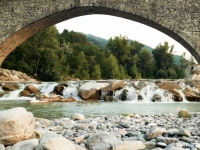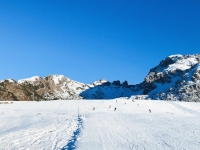Bobbio praised as early as 14 BC.
Bobbio , during the TV broadcast the "Borgo dei Borghi" of Italy, was elected by popular acclaim, or rather by acclaim of "televotes", the Most Beautiful Village in Italy!! The small village in the province of Piacenza, overlooking the bathing river Trebbia and has won thanks to careful protection and promotion of its medieval village, but also thanks to its culture, its history, its unique artistic jewels, but also thanks to the fact of being inserted in a context, the Valtrebbia, which Hemingway defined as the most beautiful valley in the world. The history of this small center is lost in the mists of time, in fact the territory has been inhabited since the Neolithic and became Roman in 14 BC with the subsequent birth of the first nucleus of the village of Bobium. But the history of Bobbio is identified above all with the history and life of the Irish missionary monk Colombano, where he died in 615, and with the Monastery of San Colombano which he founded in 614.
What see
Bobbio is a small town, but the density of art and culture that you will find is something unique and you will fall in love with the cobblestone streets and brick buildings of this medieval town. The Monastery of San Colombano , a monumental aggregation of buildings among which stands the facade of the basilica flanked by the elegant portico of the abbey, where the museum and the famous scriptorium are located. Here the Irish monk San Colombano founds one of the most important and prestigious libraries in all of Christianity and where, even today, some of the oldest and most valuable Latin manuscripts in history are preserved. The Abbey Museum collects many findings from the pre-Roman and Roman periods and then focuses on the history of San Colombano. The tomb of the Saint, instead, is placed in the crypt of the structure.
The other symbol of Bobbio is the famous Ponte Vecchio, also called Gobbo or del Diavolo . The bridge, dating back to the Romanesque period with subsequent renovations and Baroque superstructures, crosses the Trebbia river and connects the city with the road leading to Piacenza. It is 280 meters long and consists of eleven long arches, unequal to each other, which give it an original and evocative appearance and which is also the origin of the legends about its name. In fact, it is said that the bridge was built with this aspect by the devil himself to frighten the monks of the monastery of San Colombano and prevent them from crossing the river. The Cathedral of Bobbio is a perfect example of Emilian art and architecture of the fifteenth century with very interesting frescoes. A very suggestive destination is the mighty Malaspin Castle , built during the fourteenth century and which was the stronghold of the Guelphs during the struggles with the Ghibellines of Piacenza. Its imposing tower dominates the whole surrounding area and from its top you can enjoy a beautiful panoramic view of the city, the Apennines and the valley with the course of the Trebbia river. Also worth seeing is the Piazza San Francesco, the sanctuary of the Madonna dell'Aiuto (1621) and the monastery of San Francesco , preserved in the rustic Franciscan style of the thirteenth century, a cloister from the fifteenth century, while the church was rebuilt in Baroque style at the beginning of the eighteenth century. Another important attraction of the area are the thermal establishments. In fact, since ancient times, Bobbio was famous for the springs of thermal water that gushed from many points around the city. The most famous are the Baths of Sant'Ambrogio a Piancasale , used by the monks of San Colombano to produce salt, the Baths of San Martino , which can boast a new structure and water rich in hydrogen sulphide, bromine and lithium and, finally, the Terme di Rio Foino freely and freely accessible just outside the urban center of Bobbio.
not to be missed
The Feast of San Giuseppe in Bobbio has a millenary tradition. As is customary, on March 19, the day on which the church remembers St. Joseph, on the bed of the Bobbio stream, in Candia, a large bonfire , a rite that marks the passage from winter to spring, is accessed around 8:30 pm, the fuje, with foliage, crates, paper, cardboard, vine shoots, prunings, scraps from field work, to the sound of an ancient refrain that invokes Saint Joseph to return spring and summer: a typical example of how there is it was an ancient intermingling of pagan and Christian rites (the light that defeats darkness). On the bonfire, a puppet is burned, the old one, symbol of the winter that is ending. Around the bonfire, in the fields and near the farms, a rich banquet prepared by the women of the village is offered: all hot drinks, mulled wine, cold cuts, cheeses, wine, fritters, crisps and other desserts typical of the festival. Another event not to be missed in Bobbio is the Palio held on the last Sunday of June . The tournament foresees the challenge of the five historical districts of Bobbio in various competitions of skill for the conquest of the drape that will become trophy for the winning district. The Bobbio Film Festival is a laboratory-cinematographic workshop and a Film Festival held in Bobbio since 2005, organized by the Municipality of Bobbio and the Farecinema Association, president of the film director Marco Bellocchio.
Climate Curiosity Tips
Climate: Bobbio re-enters the climatic zone corresponds to the Ligurian appenine temperate microclimate. The landscape is characterized by Apennine mountains that influence the climate in such a way that in the summer it remains quite cool, while in winter it is not affected by phenomena related to intense wind and fog. Bobbio is perfect to visit in every season of the year: in winter the city is often whitewashed, offering a magical and fascinating atmosphere; in spring and summer the luxuriant nature of the Apennines gives its best by offering a fresh refuge from the heat of the Po Valley, autumn finally gives the woods around the town an incredible variety of colors ranging from copper to red for panoramas truly breathtaking
Curiosities: Bobbio is located at the foot of Mount Penice at 272 meters above sea level and has a resident population of just over 3500 inhabitants. On November 23rd, the patron saint of the city, San Colombano , is celebrated.
Advice: While you are strolling, do not miss the opportunity to visit one of the taverns that open up in the shadow of noble palaces to taste some delights of the local cuisine such as macaroni macaroni , made with the use of a knitting needle and cooked in a tasty meat sauce. To taste the Brachettone di Bobbio , a salami to be cooked made with the shoulder of the tanned pig, sewn into the rind and seasoned between two wooden bands. Delicious donuts, stewed snails, a typical dish of the autumn, or, again, the Bobbiese rice cake with vegetables, rice, eggs and cheese and the almond cake made with bobbiese.


